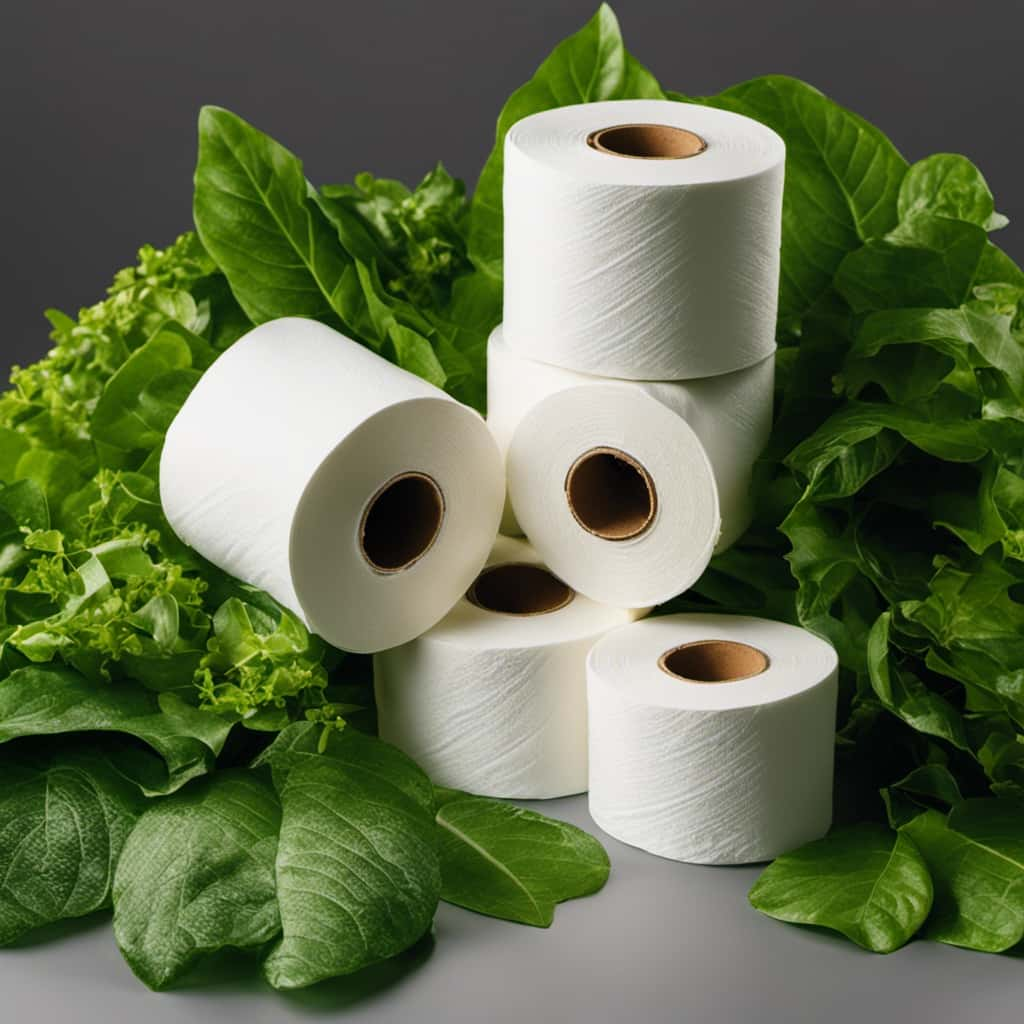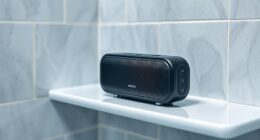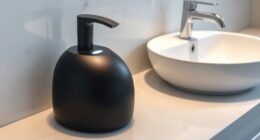Ladies and gentlemen, welcome to our guide on the various types of toilet flush buttons.
Today, we embark on a journey to explore the world of bathroom technology, where innovation meets necessity. Like a skilled conductor leading an orchestra, these flush buttons orchestrate the flow of water with precision and efficiency.
From the classic push button to the touchless sensor, we will unravel the mysteries behind each one, equipping you with the mastery to make an informed choice for your porcelain throne.
So, let us begin this enlightening expedition, shall we?

Key Takeaways
- Classic push button and lever flush buttons are popular choices due to their simplicity, durability, and reliability.
- Dual flush buttons are increasingly popular for their water-saving capabilities, offering two flushing options and potential cost savings.
- Touchless sensor flush buttons provide convenience and improved hygiene by eliminating the need for physical contact and reducing the spread of germs.
- Electronic panel flush buttons offer a sleek and modern appearance, customizable flushing options, but come with a higher cost and reliance on electricity.
Classic Push Button
One of the most common types of toilet flush buttons is the classic push button.
Classic push button toilets offer several benefits that make them a popular choice among homeowners. Firstly, they offer simplicity and ease of use, as all you need to do is push the button to initiate the flushing process.
Additionally, classic push buttons are known for their durability and reliability, ensuring that they’ll continue to function effectively for a long time.
To maintain a classic push button toilet, it’s important to regularly clean and disinfect the button itself, as well as the surrounding area. This helps to prevent the buildup of bacteria and keeps the toilet looking clean. It’s also recommended to periodically check the internal components of the toilet, such as the flapper valve and the flush valve, to ensure they’re in good working condition.

In conclusion, classic push button toilets offer simplicity, durability, and reliability. By properly maintaining these toilets, you can ensure their continued functionality and cleanliness.
Now, let’s move on to the next type of toilet flush button, the dual flush button.
Dual Flush Button
Moving on to the next type of toilet flush button, let’s explore the benefits and features of the dual flush button. Dual flush toilets are becoming increasingly popular due to their water-saving capabilities. They offer two different flushing options: a half flush for liquid waste and a full flush for solid waste. This allows users to select the appropriate amount of water needed for each flush, resulting in significant water conservation.
To properly use a dual flush button, users should be aware of the following guidelines:

- For liquid waste, press the smaller button or the button labeled ‘half flush.’
- For solid waste, press the larger button or the button labeled ‘full flush.’
Advantages of dual flush toilets include reduced water consumption, lower utility bills, and a positive environmental impact. However, there are also a few disadvantages to consider, such as higher initial cost and potential maintenance issues.
Lever Flush Button
Now let’s delve into the next type of toilet flush button, the lever flush button, and explore its unique qualities.
Lever flush buttons have been a popular choice for many households due to their simplicity and ease of use. One advantage of lever flush buttons is their durability. Unlike other types of flush buttons, levers are less prone to wear and tear, making them a long-lasting option.
Additionally, lever flush buttons offer a greater control over the flush intensity. By adjusting the force applied to the lever, users can choose between a partial or full flush, helping conserve water.
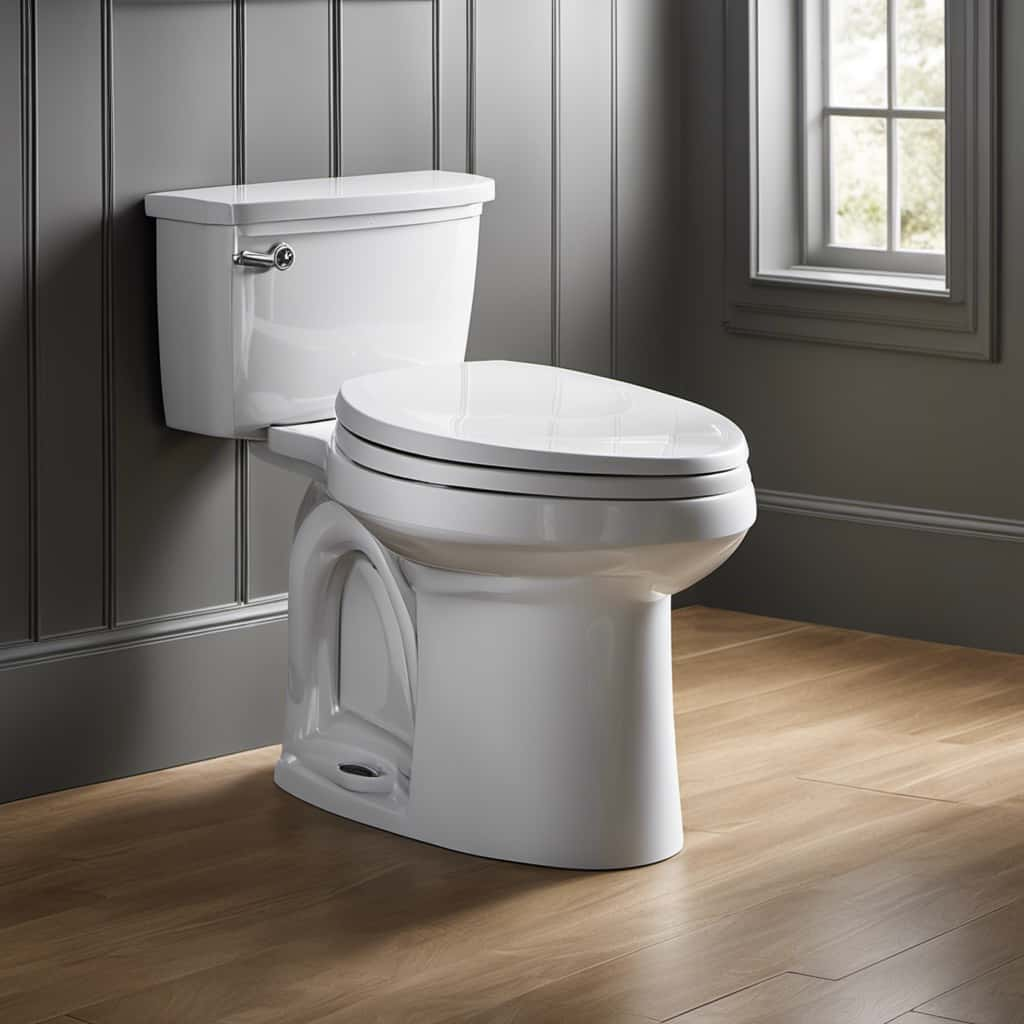
However, one disadvantage of lever flush buttons is the potential for accidental flushes. The protruding lever can be easily bumped or brushed against, leading to unintended flushes.
To properly maintain lever flush buttons, regular cleaning is essential. Wiping the lever with a mild disinfectant and checking for any loose screws or connections will ensure optimal functionality.
Touchless Sensor
As we transition into the next type of toilet flush button, let’s explore the touchless sensor, which offers a convenient and hygienic option for flushing.
The touchless sensor technology in public restrooms provides several benefits:
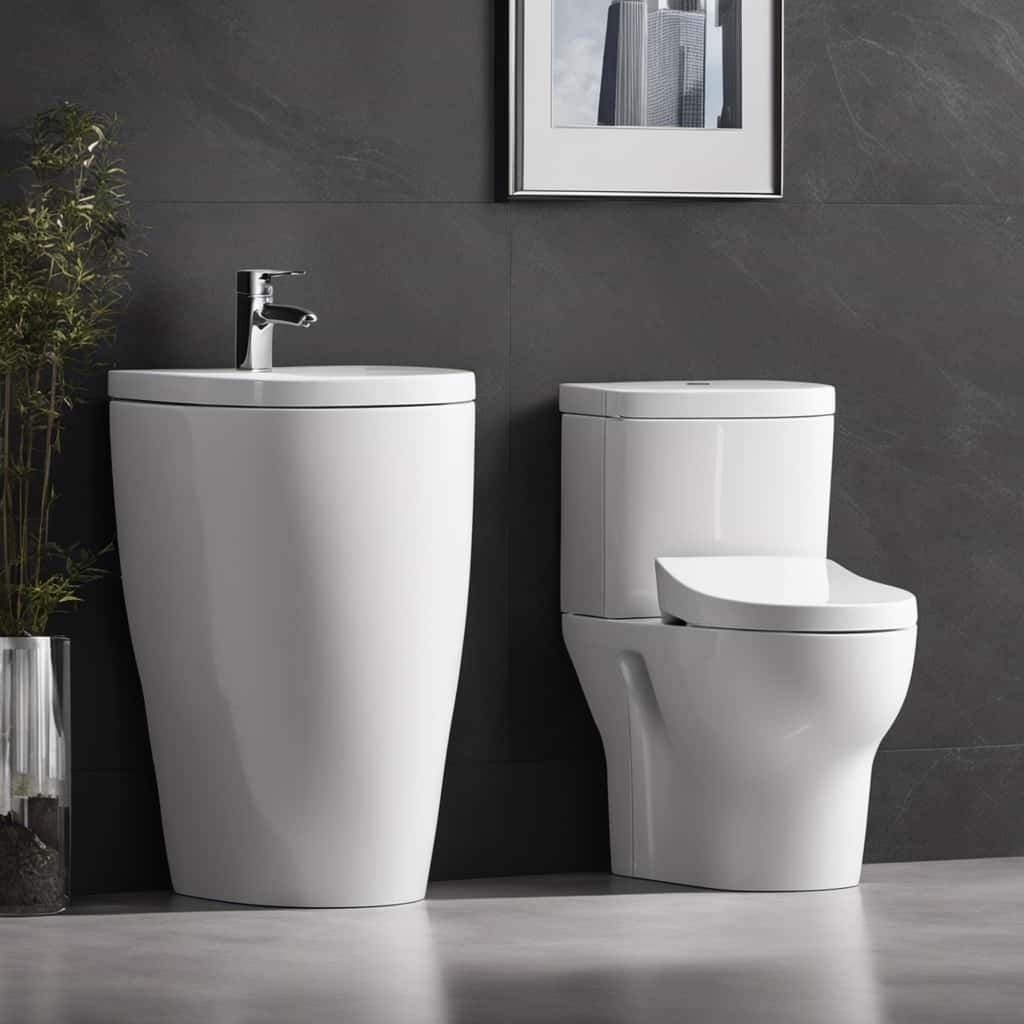
- Improved Hygiene: Touchless sensor flush buttons eliminate the need for physical contact, reducing the spread of germs and bacteria commonly found on traditional buttons.
- Reduced Germ Transmission: By eliminating the need to touch the button, touchless sensors minimize the risk of transmitting germs from one user to another, promoting a cleaner and healthier restroom environment.
- Enhanced Convenience: With touchless sensors, users can simply wave their hand in front of the sensor to activate the flush, making it easier and more convenient to use.
Electronic Panel
To continue our exploration of toilet flush buttons, let’s delve into the convenience and functionality of electronic panels.
Electronic panel toilets offer several advantages over traditional flush buttons. Firstly, they provide a sleek and modern appearance, seamlessly integrating into any bathroom decor. Additionally, electronic panels offer customizable flushing options, such as dual flush or water-saving modes, allowing users to select the most appropriate option for their needs.
However, these toilets also have some disadvantages. They’re generally more expensive than traditional flush buttons and require access to electricity, which can limit installation options.
When troubleshooting common issues with electronic panel toilet flush buttons, it’s important to check the power supply and ensure that the panel is properly connected. If experiencing any malfunctions, it’s best to consult the manufacturer’s instructions or seek professional assistance.

Frequently Asked Questions
Are All Toilet Flush Buttons Compatible With All Types of Toilets?
Toilet flush button compatibility varies depending on the type of toilet. Troubleshooting common issues can help determine if a flush button is compatible or if adjustments need to be made.
How Do I Clean and Maintain the Different Types of Toilet Flush Buttons?
To clean and maintain different types of toilet flush buttons, follow these cleaning instructions: 1) Use a mild detergent and water to wipe the buttons. 2) Avoid harsh chemicals that can damage the buttons. 3) Prevent common issues by regularly checking for any loose or stuck buttons.
Can I Replace a Traditional Lever Flush Button With a Touchless Sensor or Electronic Panel?
Yes, you can replace a traditional lever flush button with a touchless sensor or electronic panel. The benefits of touchless flush buttons in public restrooms include improved hygiene and reduced germ transmission. Electronic panels in smart toilets offer advantages such as customizable settings and water-saving features.
Are There Any Special Considerations or Precautions When Installing a Dual Flush Button?
When installing a dual flush button, it’s important to follow the manufacturer’s instructions for proper installation. Make sure to tighten all connections securely and check for any leaks. Regular maintenance includes cleaning the button and checking for any malfunctions.
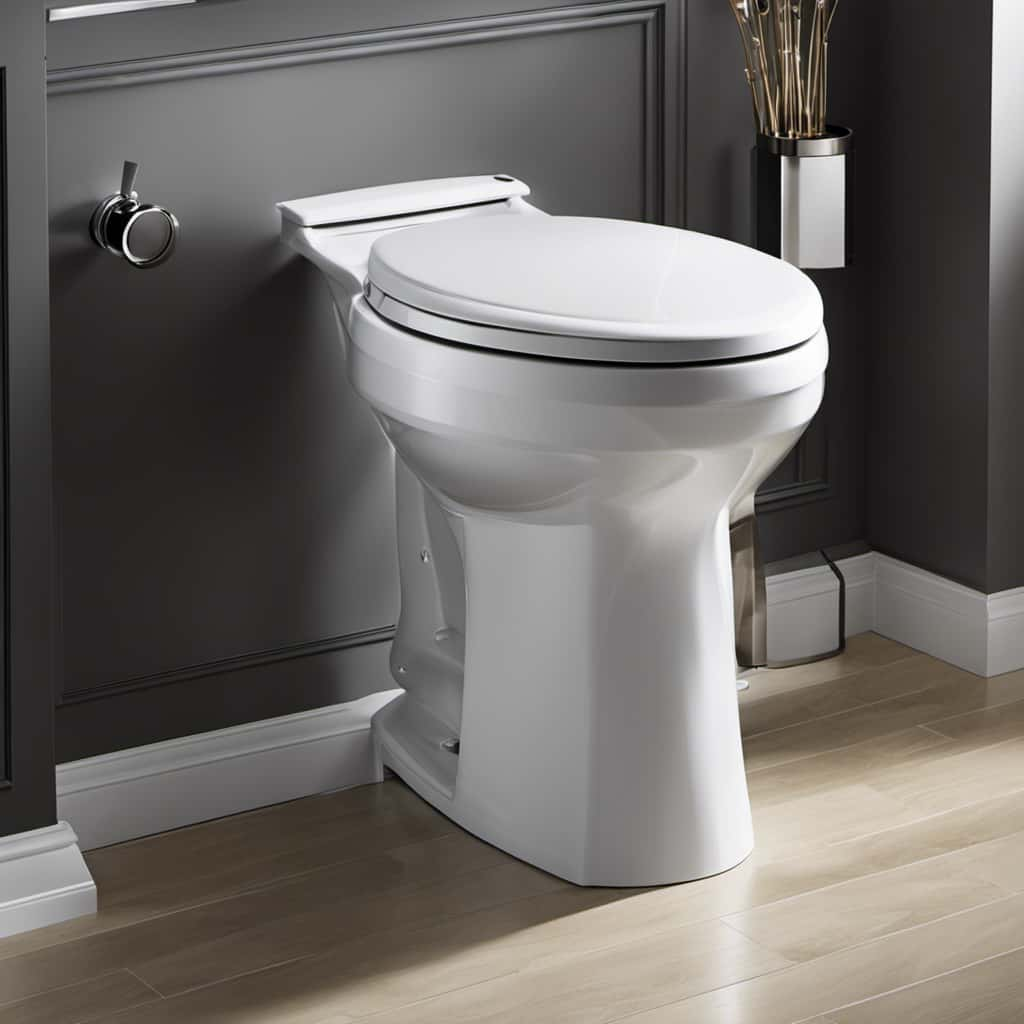
Do Touchless Sensor and Electronic Panel Flush Buttons Require Electricity to Function?
Touchless sensor flush buttons offer convenience and hygiene, but their reliance on electricity can be a drawback. On the other hand, electronic panel flush buttons save energy with their efficient features.
Conclusion
In conclusion, understanding the different types of toilet flush buttons is essential for choosing the right one for your needs.
Whether it’s the classic push button, the dual flush button, the lever flush button, the touchless sensor, or the electronic panel, each option offers its own advantages.
By considering factors like water efficiency and ease of use, you can make an informed decision that ensures a reliable and convenient flushing experience.
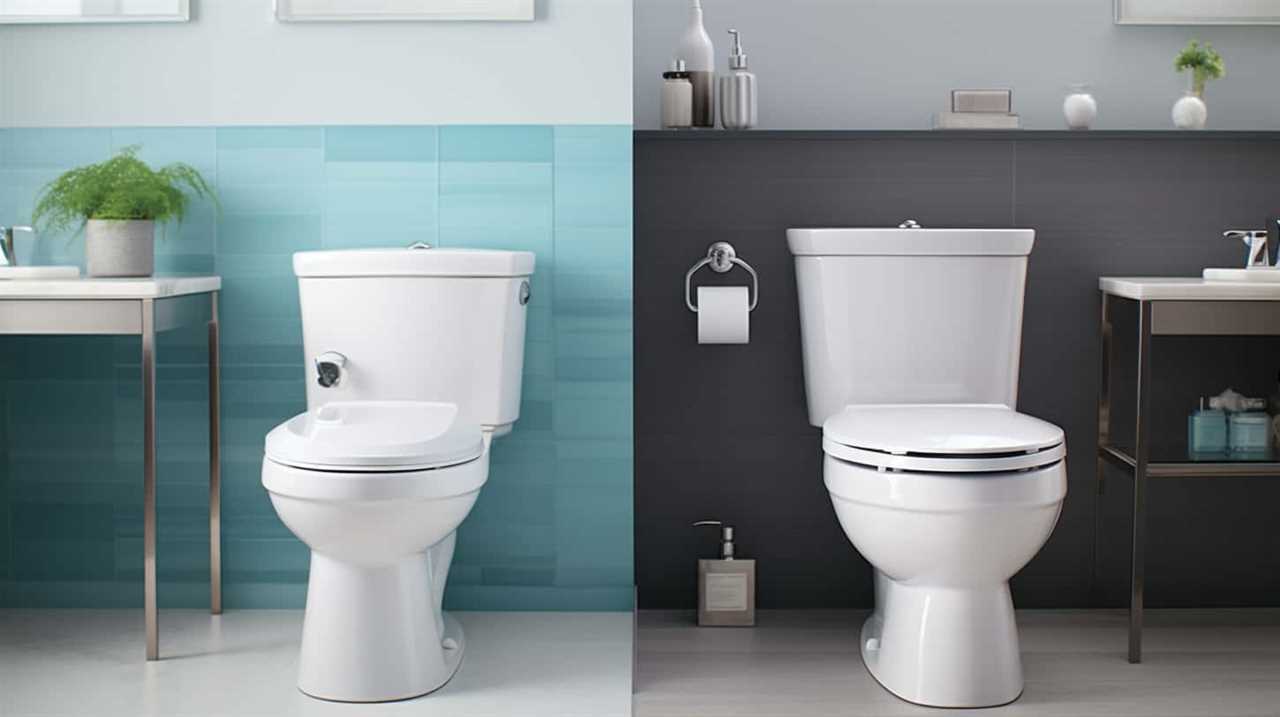
So, next time you upgrade your bathroom, remember to pick the perfect flush button for your toilet.




